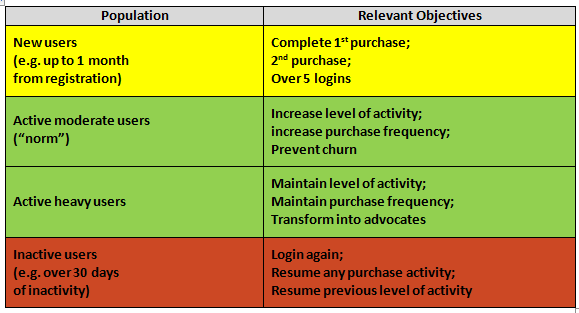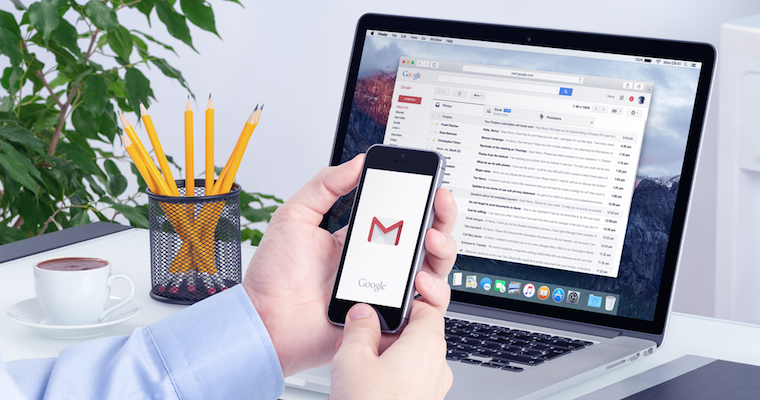As a marketer, you’ve likely attempted to use emails for various marketing objectives. And for good reason: time and again, email marketing is consistently cited as the most effective form of online marketing in driving conversion.
Moreover, it’s relatively easy and quick to execute. You can’t miss! Oh, but you can. As many as 84% of all emails are labeled as spam, or just as detrimentally, deleted. Not all emails achieve the result they set out to, and too often, it’s because of easily avoidable mistakes that are far too common.
Now, the first step in evaluating where your efforts may have fallen short, simply check MailChimp’s handy benchmark report to see where you are within your industry. For example, a 17% open rate could spell disaster if you’re in the non-profit sector, be considered average in the gambling industry, and well above average if you’re in the business of sending e-coupons.
Generally, email open rates are great indicators of the quality of your mailing list, subject line choice, time of sending, and even an underperforming ESP (email service provider). The positioning of your click rates tells a different story altogether.
What they point to, more than anything, is relevance.
Click rates are calculated out of only the people who opened the email to begin with, meaning those who saw it in their inbox during their busy day and felt like it may be of value to open it. Now that your email “has the floor,” it needs to make its case convincingly and encourage a click on the call-to-action, whatever that may be.
If you find you’re on the low side for either index, or if you’re just interested in exploring how to boost the effectiveness of your email strategy with some fine tuning, read on. Odds are you’re committing one or more of these mistakes.
Use this guide to identify these mistakes and amend your strategy accordingly.
If You’re Looking to Boost Open Rates
Examine the Root
Your emails could be ending up in your recipients’ spam folders, significantly lowering your open rates. This could be caused by the platform you’re using to send emails. If you’re currently not using a designated service, i.e. opting for doing it yourself with an in-house solution via Outlook, consider switching to an ESP (email service provider). In addition to potentially boosting deliverability, you’ll find most reputable ESPs can endlessly simplify mailing list management, as well as matters like subscribing and unsubscribing.
Timing is Everything
Just like the endless debate on posting times on social media to get the most engagement, email sending times matter. My best piece of advice on this issue may be controversial, but I stand by it—whenever possible, avoid sending emails in the morning.
Surprised? Many marketers believe sending emails early in the morning guarantees them a top spot in the recipients’ inbox. However, they’re setting themselves up for failure by trying to dance in an already crowded dance floor. Aim to send communication emails in the early afternoon hours, when they’re more likely to be opened by someone checking their email for the second or third time during the day.
Just as importantly, timing should also be considered in relation to the purpose of the email, ensuring maximum relevance to the time of sending. If it’s a 1-day offer, sending things in the early morning hours is unavoidable – and your subject line should be as urgent as can be. It’s fine to send an email advertising an event that’s only starting in 48 hours, but it should be constructed in a way that emphasizes that and gives readers a clear option on what they can do about it now. If there is nothing they can do now, 99.9% of the time the email is unnecessary.
Optimal Frequency
Do you have an email schedule you follow, such as sending new member offers on Tuesdays, updates on Thursdays and sale alerts every other Friday? For all its advantages, a rigid email schedule can quickly turn into a double-edged sword—causing you to send emails when there isn’t much to say, or to limit yourself to certain sending days which may not align with real-time events – both internal (product updates, important announcements) and external (holidays such as Black Friday, unexpected events relevant to the industry and/or audience). These factors often have a profound effect on the email’s performance, and should take precedence over any email schedule.
Get Your Foot in the Door
Many people are inundated with marketing emails on a daily basis, in addition to the typical use of their inbox for personal communication. It’s a known ritual: wake up, download emails, glance at subject lines, open few and overlook/delete the rest. Just by having your company’s name as the sender, your message is at a high risk of being deleted or overlooked. Just like a social media newsfeed, marketing content pales in comparison to an exciting email from one’s family and friends. This pattern is the reason subject lines are, hands down, the most crucial part of your email.
High quality subject lines don’t have a DNA, but in my experience, there are several characteristics that increase the likelihood of an email being opened:
- Spam Free: Take the time to become acquainted with the latest words, phrases, and patterns on spam filter radars. Some known offenders include text in all CAPS, profanity, words typically found in unsolicited emails (‘enlargement’ is a telling example), excessive punctuation/symbols and hyperbole. If you’re unsure about the potential of a risky subject line, or if you’re torn between several, by all means—run A/B tests! Especially on protocols. It’ll teach you so much about your customers. During the subject line brainstorm, run it through a subject line tester.
- Urgency: Without resorting to the obvious (and often spammy) blunt options of screaming ‘NOW!’, there are ways to create urgency in a way that doesn’t degrade your product/service and still respects a consumer’s time and deliberation. Examples of this subtle approach include naming the validity period briefly (e.g. “24 hrs to go”), including a vague phrase that requires opening the email for peace of mind (e.g. “Tick, tock”; “This is kind of a big deal…”), justifying a time-limited offer with an external event (Free Shipping–Guaranteed by Christmas!), and using positive testimonials emphasizing the immediate benefit of having something you’re offering (e.g. “How did I live without this?”).
- Emotional Appeal: This doesn’t only apply to non-profits. In fact, emotion is used in all forms of marketing, so an extent. Don’t be afraid of working in a bit of humor or a personal touch to your subject line. From the dramatic (e.g. “We need to talk”) to the curious (“Pick a side”) and the ultimate heartstrings tug (“You could save a child’s life”). Finally, a more risky way of encouraging emotional engagement is by creating a low level of disappointment (e.g. “Your offer has expired”) and subsequently a positive surprise within the email (“Gotcha! You’ve still got 24 hours”). That type of roller-coaster is seen by consumers as humorous and clever at worst, and addictive at best.
- Mild Personalization: This is a tricky fine line, since personalized subject lines are notorious for being spammy (the word ‘You’ is in itself considered spammy to a degree), while they’ve also been found to yield higher open rates in most industries. The best way to stay on the right side of personalization, is to do it occasionally and strategically. For instance, a welcome email post registration should feature the person’s first name, if it has been filled out in the form. Ongoing offers and update emails don’t necessarily need to contain the person’s name, as it can get old and it’s mostly an empty gesture –people know it boils down to a computer sorting through first names and emails.
If You’re Looking to Boost Click Rates
Divide and Conquer
Like low open rates, low click rates could indicate a problem with the quality of your mailing list. If you have a unified mailing list you send communications to, it’s in your best interest to ditch the ‘one size fits all’ mentality and take steps in order to segment it correctly. The two basic email audience segments are acquisition and retention.
Acquisition includes people who’ve yet to convert into customers (e.g. haven’t made a purchase yet). These are sometimes regarded as ‘leads’ and may consist of emails potential customers you’ve collected through a lead form, a PPC campaign or other ways, or purchased email lists (less effective, but you already know that). Emails sent to this segment typically include aggressive offers, re-targeting and new customer exclusives. The retention category includes email communications sent to existing/registered customers, such as ‘welcome’ emails, newsletters, order confirmation emails, and special announcements.
However, the difference between the two is a lot more pronounced than “current customer” and “not a current customer”. Both segments can and should be further divided into sub-segments based on activity volume and timeframe. Such sub-divisions can be nicknamed, for example, New Leads, Cold Leads, Inactive Customers, VIP Customers, Coupon Users, and more. Each segment, and each sub-segment, has a different set of expectations from your company – and your emails need to take that into account.
Don’t send a VIP-only offer to someone who’s not eligible for it, and don’t send a longtime client a trial service offer. Message each segment with different offers, different wording and at different frequencies. It takes practice, but to give yourself a head start, collect information about your audience segments’ expectations periodically through surveys, reviews, feedback ratings, and focus groups.
Readability
Between 45% and as many as three-quarters of all emails being opened on mobile devices. In a nutshell, you need to ensure your emails are readable on all platforms and devices. Sounds fundamental, doesn’t it? This factor is so basic, it’s surprising how many senders still overlook it.
Beyond ensuring your email’s design is responsive (great tips for that here), take the extra step and review your email on a variety of different devices and email clients, just as you would QA a new page added to your website.
Here’s a partial list for what you should be checking for on each device:
- Does your subject line cut-off? If so, shorten it so it can be read in full!
- Do the text lines break in less-than-optimal places, creating reading obstacles like lines with many words or lines with very few words? If so, break them up differently or use images.
- Does the CTA appear below-the-fold? This is important – either add another CTA higher up in the email, or shorten the email.
- Do any images look stretched or distorted in any way? Check what needs to be done with the design so it looks professional.
- Do the images take long to load? No one will wait until your heavy email downloads before moving on, especially if they’re on-the-go and relying on costly cellular data. Reduce the size or amount of images.
Make it Pop
Everyone says “invest in creative”, and that’s a no-brainer! Yet the way to keep your emails memorable and recognizable is to tie them in with the rest of your marketing tools, and to do that, you’ll need more than eye-grabbing creative.
Invest in the development of a recognizable creative language for both design and copy, which encompasses all your consumer-facing communications. This includes emails and other online assets such as your website and social media pages, as well as key offline tools such as mailed catalogs, brochures, and television ads.
Moreover, your plan should also account for special occasions during which a departure from the regular design is expected and essential. A slightly different font, letter weight, or color gets instant attention from regular recipients, before even discussing content.
Spit it out Already
Any marketing copywriter knows there are three ways to say one thing – the long way, the short way and the way that sells. Often, the latter is even more concise than the short way. You know you’ve got a lot to offer, now make sure the recipient knows it by giving him vital information in as few words as possible. If you’ve got multiple messages, consider breaking them into several emails that’ll be sent on different days.
Find your key message, word it in a way that highlights the value it holds for the recipient (e.g. “Enjoy the lowest prices of the year!” is stronger than “get a set of linens at 50% off”) Get to your call to action before the fold (on PC and mobile devices alike), and learn to master how to
Where to, Next?
This post has hopefully given you insights as to how you can improve your ad-hoc email marketing campaigns. Once you’ve got those down to a science, it’ll be time to work on the holy grail of any great email marketing strategy – email protocols. Protocols are essentially ‘smart’ automated emails, often in a particular order, sent by a system on an ongoing basis based on pre-defined population parameters.
For instance, “Welcome to (site)” is often the first email in a protocol intended to drive new users into engaging more deeply with the product – i.e. making their first purchase, completing their profile, ‘Sharing’ on social media and more.
The key to setting up an effective email protocol, and you should strive to have several, is an excellent database. Build on your existing database and maintain it with as many details as possible. Not just demographics (age, gender, address), but especially consumption behavior (frequency, volume, preferences) and personal details (birthday, interests).
Having all this data means you can slice and dice your overall client population whichever way you’d like, and effectively run email protocols that cater to each population in a different way, every single day. If it wasn’t clear, it’s nearly impossible to set up a protocol without an ESP (email service provider), and you’ll certainly need to invest in a campaign management system.
If you have a stellar, up-to-date, comprehensive database in place, the sky’s the limit. Start by mapping your main audience populations and assigning objectives for each. Here’s a very rough example for a medium-sized e-commerce site:

Once the basic categories are mastered, you can and should branch out into more specific categories of users. For instance, “recently reactivated” users, defined as users who’ve responded to a reactivation email in the past week, could stand to receive gradually decreasing offers until they’ve fully resumed their previous patterns of activity. As you can see, each population has its own objective, and therefore it stands to reason that a different method should be applied in each case. Inactive users, for example, will likely need the most aggressive offer in order to respond (if dealing with e-commerce, this can be an exclusive promo code).
Conversely, new users may need different reassurances altogether, such as your site’s reputation and security, in order to feel comfortable. They may also need a friendly guide to navigate the new territory, and your help in getting them settled in can exponentially decrease the rate of desertion.
I could go on forever with tips and tricks to enhance your email strategy, but I hope the main message is clear: email marketing is a world of its own, with vast and exciting possibilities for any business. Leave a comment with some techniques you’ve used to boost open rates, click rates, and conversion in general—and let me know how they’ve fared.
Image Credits
Featured Image: Alexey Boldin/Shutterstock.com
In-post Photo: Image by Ben Oren




